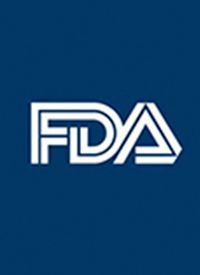Article
FDA Supports Continued Development of Oral Paclitaxel/Encequidar in Metastatic Breast Cancer
Author(s):
Athenex, Inc. held a Type A meeting with the FDA to discuss the deficiencies raised in the complete response letter issued in March 2021 for the new drug application for oral paclitaxel plus encequidar in the treatment of patients with metastatic breast cancer.
FDA

Athenex, Inc. held a Type A meeting with the FDA to discuss the deficiencies raised in the complete response letter (CRL) issued in March 2021 for the new drug application for oral paclitaxel plus encequidar in the treatment of patients with metastatic breast cancer.1
In the CRL, the regulatory agency stated that the application was not ready for approval, even though the review cycle for the NDA was complete. The FDA shared that they had safety concerns with the approach, as an increase in neutropenia-related effects had been observed in patients who received oral paclitaxel plus encequidar than those who received intravenous (IV) paclitaxel.2
The agency had also cited concerns regarding data from the primary end point of blinded independent central review (BICR)–assessed objective response rate (ORR) at week 19 in the single pivotal phase 3 trial that examined the combination. Specifically, the agency stated that the BICR reconciliation and reread process could have introduced unmeasured bias and influence on the review.
At the time, the FDA had recommended the launch of a “new, adequate, well-conducted” trial in patients with metastatic disease that would be representative of this population in the United States. They also called for approaches dedicated to improving safety with the regimen, such as dose optimization and/or the exclusion of patients considered to be high risk for toxicity with the regimen.
During the Type A meeting, the global clinical-stage pharmaceutical company shared additional analyses, which included overall survival data in various patient subgroups, to offer a comprehensive summary of the risk/benefits of the regimen. Athenex, Inc. also offered to collect additional OS data that could be used to inform the design of a new study.
At the Type A meeting, the regulatory agency was “supportive and encouraged the Company to continue development” of the regimen for use in this patient population, according to Athenex, Inc. The agency also agreed that a “well-designed” and “well-conducted” trial could potentially address the concerns raised in the letter. As such, the company is working on establishing a design for the trial and will share with the FDA in the fourth quarter of 2021.
“We appreciate the FDA’s support for the development of oral paclitaxel and encequidar in this meeting and expect to maintain a collaborative dialogue on this program,” Rudolf Kwan, MD, chief medical officer of Athenex, stated in a press release. “We continue to believe that, if approved, oral paclitaxel and encequidar has the potential to address a major unmet need in metastatic breast cancer. We hope to agree on a program that is capital efficient and will result in value creation for our stakeholders.”
Findings from the phase 3 trial that had supported the NDA, showed that oral paclitaxel plus encequidar resulted in a significant improvement in objective response rate (ORR) compared with IV paclitaxel in patients with metastatic breast cancer, meeting the primary end point of the trial. The ORR rates in the investigative and control arms were 36% and 24%, respectively (P = .01).3
Notably, the rate of responders who experienced a duration of response to treatment that persisted for 150 days or longer proved to be 2.5 times longer in those who were given oral paclitaxel/encequidar vs those who received IV paclitaxel.
A total of 402 participants with metastatic breast cancer were enrolled to the phase 3 trial. Study participants were randomized 2:1 to receive either oral paclitaxel/encequidar (n = 265) or IV paclitaxel (n = 137). At baseline, patient characteristics were well balanced across the arms. The primary end point of the trial was ORR per RECIST v1.1 criteria at 2 consecutive time points.
At a cutoff date of July 25, 2019, data from the trial demonstrated a trend toward an improvement in progression-free survival with oral paclitaxel/encequidar vs IV paclitaxel (P = .077). Moreover, investigators also observed a trend toward an improvement in overall survival with the investigational regimen (P = .11).
Notably, participants who received encequidar experienced lower rates of neuropathy vs those who received IV paclitaxel. In the investigative and control arms, neuropathy rates were 17% and 57%, respectively. Additionally, lower rates of alopecia, arthralgia, and myalgia were experienced by those who received the investigational regimen compared with the control.
Rates of neutropenia were comparable between the 2 treatment arms, but more patients who received oral paclitaxel/encequidar reported grade 4 neutropenia and infection. Those who received the investigative regimen also experienced a higher rate of gastrointestinal toxicities compared with those who were given the control regimen.
Oral paclitaxel and encequidar is also being developed for use in patients with cutaneous angiosarcoma. In April 2018, the FDA granted an orphan drug designation to oral paclitaxel for use as a potential therapeutic option in patients with angiosarcoma.4 In October 2019, the European Commission granted an orphan drug designation to oral paclitaxel plus encequidar for the treatment of patients with soft tissue sarcoma.
References
- Athenex provides update from FDA Type A meeting regarding oral paclitaxel plus encequidar for the treatment of metastatic breast cancer. News release. Athenex, Inc. July 6, 2021. Accessed July 6, 2021. https://bit.ly/2TF4XnP
- Athenex receives FDA complete response letter for oral paclitaxel plus encequidar for the treatment of metastatic breast cancer. News release. Athenex, Inc. March 1, 2021. Accessed July 6, 2021. http://bit.ly/304qzcV
- Athenex announces oral paclitaxel and encequidar had a significantly higher response rate over IV paclitaxel in a phase III pivotal study in metastatic breast cancer. News release. Athenex, Inc. August 7, 2019. Accessed July 6, 2021. https://bit.ly/2OLV7gN
- Athenex presents interim data from oral paclitaxel phase II study in cutaneous angiosarcoma at ASCO20 Virtual Scientific Program. News release. Athenex, Inc. June 2, 2020. Accessed July 6, 2021. https://bit.ly/2UteFJQ









